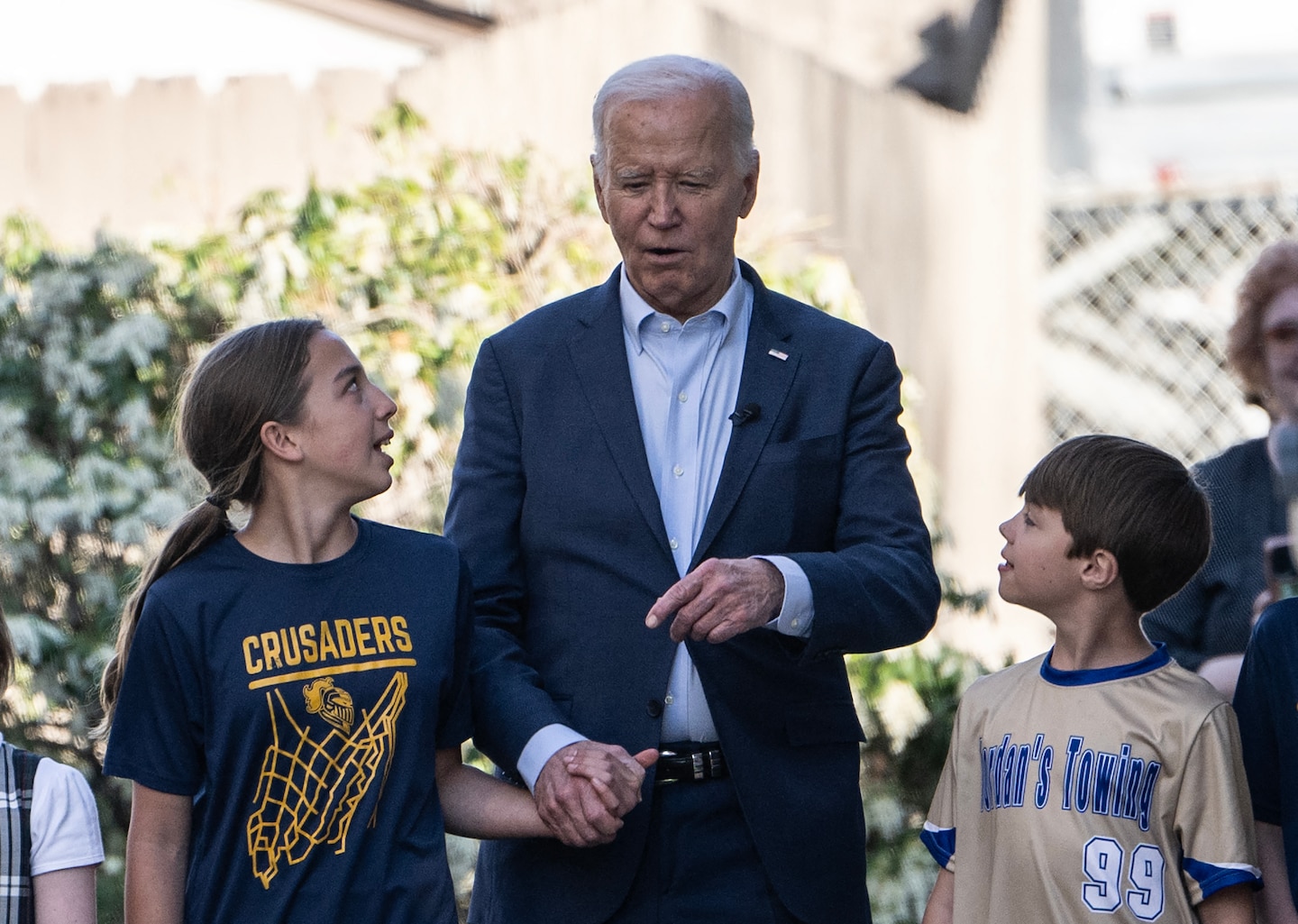Biden pits Scranton and Mar-a-Lago against each other as he turns sharply toward populism

“Scranton is a place that climbs into your heart and never leaves,” Biden said. “For me, it was 2446 North Washington Avenue.”
But the trip was about more than sentiment during the first day of Biden’s three-day stay in the crucial battleground state. He drew on populist anger against the wealthy and concerns about a world that is taking a toll on the middle class as he sought to draw distinctions between himself and his likely Republican opponent in November, Donald Trump.
“All I knew about people like Trump was that they despised us,” Biden told the crowd in his childhood town, contrasting his upbringing with Trump’s frequent visits to his Palm Beach resort, in Florida. their homes and their country clubs. When I look at the economy, I look at it through the eyes of Scranton, not through the eyes of Mar-a-Lago. »
Biden will further highlight that contrast on Wednesday when he travels to Pittsburgh to address the United Steelworkers and unveil a series of new trade protections for the steel industry. The president will call for tripling the 7.5 percent tariff on Chinese steel imports, as well as increasing pressure to prevent China from shipping steel to America through Mexican ports.
Biden will also call for an investigation into Chinese subsidies to its shipbuilding industry, following a petition from the United Steelworkers union and four other unions last month.
These actions are just the latest sign of the president’s determination to be seen as a defender of American workers like those in the steel industry, whose employees are spread across states in the industrial Midwest, the so-called “blue wall.” who could decide Biden’s choice. political fate in November.
In making this argument, he drew on his middle-class upbringing, including the years he spent in Scranton, which he describes as a scrappy working-class town. He claims that Trump, on the other hand, is a billionaire who lives in a gilded club in Florida and who would support other billionaires, the very same ones who have enjoyed an unfair advantage for too long.
On this point, Biden emphasized that the richest Americans and the companies they own pay little or no taxes.
“No billionaire should pay a lower tax rate than a teacher,” he said, citing Trump as part of the problem.
In recent months, Biden has struck a populist tone in other ways. He has criticized big companies for raising prices and imposing what he calls “junk fees” – hidden costs that companies like banks and airlines build into their consumer prices.
Trump and his supporters respond that Trump was by far the best president for the American working class and would be again – one who stimulates the economy, fights illegal immigration, cuts taxes and cuts regulations. But the battle is also over who is most emotionally aligned with workers, as Trump emphasizes his cultural conservatism and Biden emphasizes his modest upbringing and ties to unions.
Pennsylvania, which plays a central role in these battles, is a swing state expected to receive frequent visits from Trump and Biden ahead of the November election. Trump won the state in 2016, but lost it by some 80,000 votes to Biden in 2020. After Biden stops in Pittsburgh on Wednesday, he will travel to Philadelphia on Thursday.
Trump is courting the same middle-class voters with his own economic nationalism. The Republican said that if elected, he would impose a 10 percent blanket tariff on all foreign products and a 60 percent levy on Chinese imports. Many economists say the move would fuel inflation.
While Biden will talk about international economic policy on Wednesday, Tuesday was about linking his biography to his policies.
“We know that the best way to build an economy is from the middle and the bottom up. … It’s a stark contrast to my opponent,” Biden said in Scranton. “He looks at the economy of Mar-a-Lago, where he and his wealthy friends embraced a trickle-down economy that failed working families for more than 40 years. The values of Scranton and Mar-a-Lago – they are competing visions for our economy.
David J. Lynch in Washington contributed to this report.
washingtonpost





